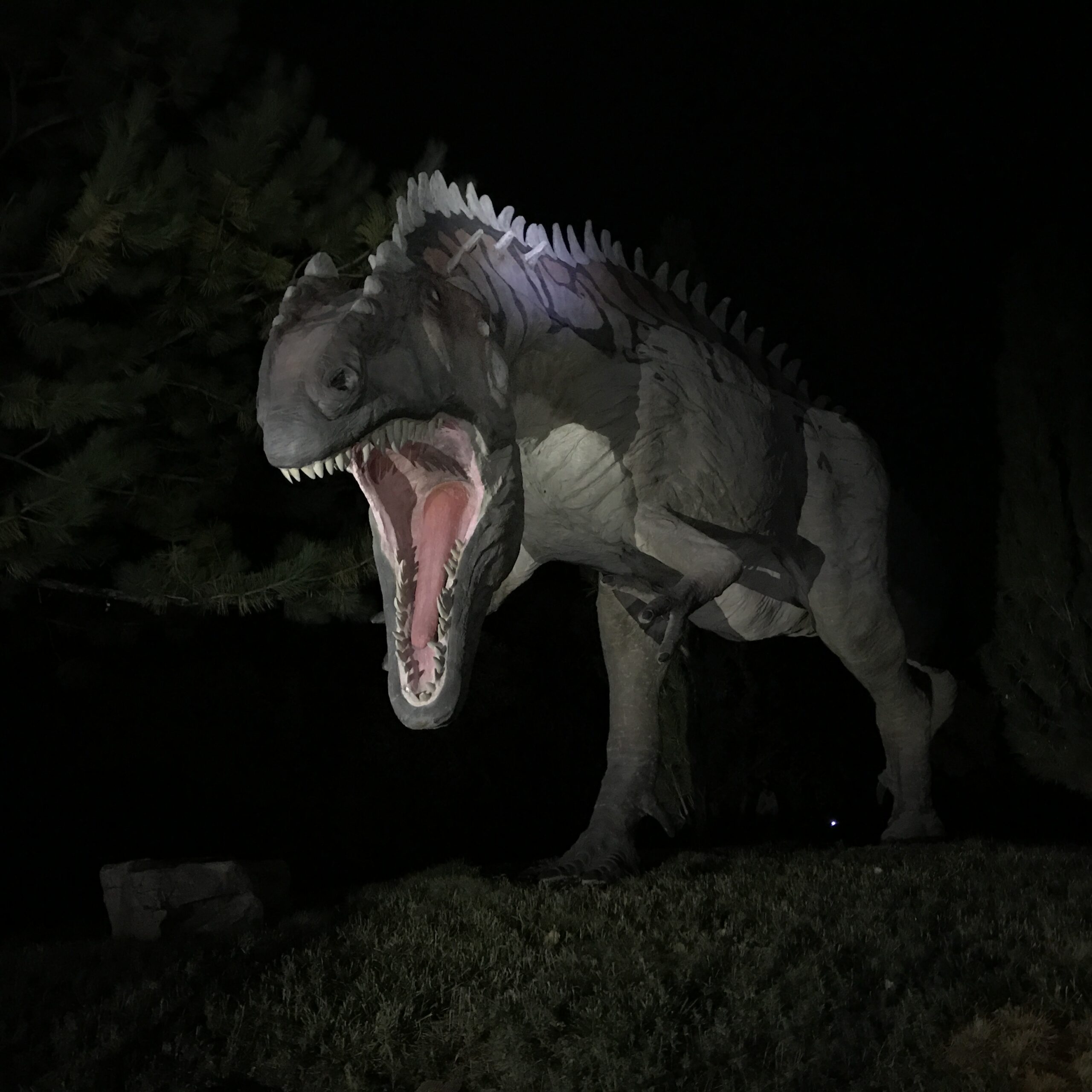Contents
Profile
Species: atokensis
Range: Early Cretaceous (Aptian-Albian, 116-110 MYA) of Wyoming, Texas, Oklahoma, Maryland, possibly Utah, Canada
Size estimate: 35-40 ft length, 6 tons
Discovery: J. W. Stovall & W. Langston Jr., 1950
Classification: dinosauria, saurischia, therapoda, allosauroidea, carcharodontosauridae
True to Life?
Since no one has ever seen a living dinosaur, and the missing pieces of the fossil record withhold important clues to their appearance, no artistic representation of a dinosaur ever gets it 100% right. On top of that, new discoveries can change our ideas of extinct creatures drastically. So, how close does this sculpture come to what we know of the original animal?
- This sculpture does a decent job of preserving the distinctive profile of this species’ head, though it might be slightly larger proportionately. Its teeth are exaggerated in size and less recurved than they ought to be.
- Menacing as this sculpture seems, the claws on its hands are implausibly tiny. Studies of Acrocanthosaurus’ arms show that though they had limited range of motion and limited reach, they could lift hundreds of pounds. The joints seem optimized for clutching things to the animal’s chest. Given these facts, scientists propose that they acted like a sort of forklift for holding prey—alive or dead—in place while the jaws did their thing. As such, in life they sported proportionally large claws, curved and pointed like giant meat hooks. The nails on this sculpture, pointy as they are, don’t quite do the originals justice. To get a better idea of how they should look, check out the claws on the skeletons of its earlier relative Allosaurus or Torvosaurus in the Stewart Museum.
- The spiky scales running the length of its spine are speculative, but feasible. A distant cousin, Ceratosaurus (visible to the south, next to the museum building), preserved similar but smaller osteoderms (scales that turned as hard as bone) that presumably ran along the length of its back. Acrocanthosaurus’ spine featured lengthened spinous processes, which gave it a distinct ridge and made it look bigger in profile. Spiky scales or osteoderms could help draw attention to that ridge and enhancing its effect as a means of showing off to other animals. This is also why we’ve chosen to paint the ridge red.
- Size-wise, this sculpture may exaggerate the animal’s size slightly, but not to an implausible degree. Acrocanthosaurus ranks among the truly giant carnivorous dinosaurs, and almost rivaled Tyrannosaurus rex in overall size.
- Behind the scenes: Benches installed under this sculpture’s chin have made it a popular photo op. We had to remove the old wooden benches due to maintenance concerns, but we do plan on replacing them sometime in the future. In the meantime, you can still take some incredible pictures here—just make sure you don’t cross the fences!

